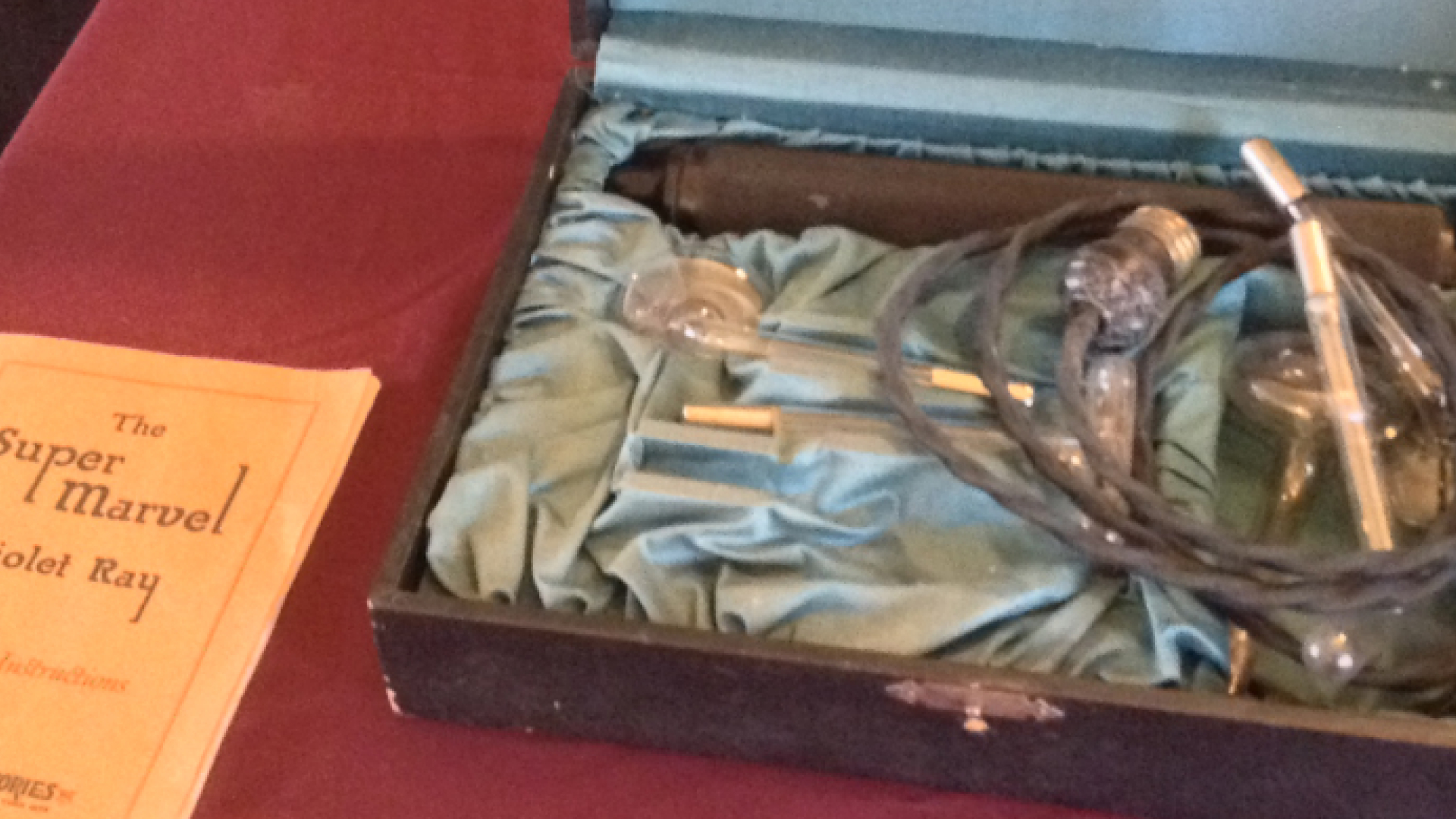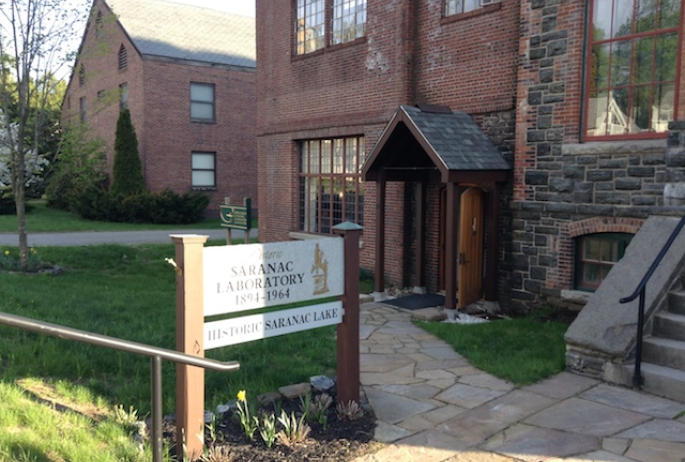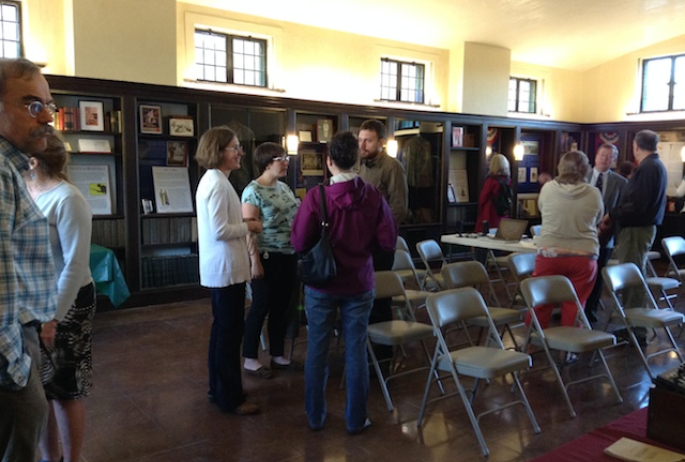It was a unique opportunity to visit the Saranac Lake Laboratory Museum. To kick off an upcoming "Medical Marvels" series, which will feature a exhibit of antique medical devices, the Museum was hosting a series of free lectures. Saranac Lake takes great pride in having been a prominent turn-of-the-century science center, and we offer many such opportunities to explore this side of our heritage.
I can't think of a better place to hear a lecture on Frankenstein than in the old laboratory in the middle of the village. Torches optional.
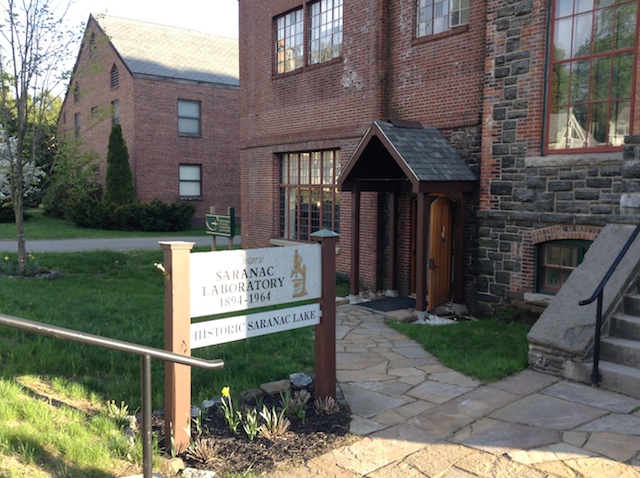
The white plague
The Saranac Laboratory Museum is a beautifully restored building in our historic, walkable, downtown. The exhibits cover our local history, with a special emphasis on Saranac Lake's Cure Center history. Dr. Edward Livingston Trudeau came to Saranac Lake from Long Island in 1873, when a "change of climate" was the only advice that could be given to someone diagnosed with tuberculosis. In this age of antibiotics, it might be hard to imagine the terrible scourge of this disease. At the time Dr. Trudeau was diagnosed, the death rate among the working class of urban America was 40% from tuberculosis alone.
Terrible odds... and yet, when Dr. Trudeau spent time in the Adirondacks, his disease went into remission. This led to him moving his medical practice, and his family, to Saranac Lake. It was the beginning of his devotion to research. A fire destroyed Dr. Trudeau's first small laboratory, and in 1894, he got a donation to organize this one, the first laboratory in the United States for the study of tuberculosis. People flocked to Saranac Lake to "Take the Cure," and a whole new identity for this frontier town was born, one that lasted until the decade after WWII led to a more reliable Cure.
Since it was lovely weather, my husband and I started the evening with a great dinner downtown and then took a short walk to the Laboratory. The former library is full of light from high windows, while the shelf space has been repurposed for exhibits.
Light refreshments were provided during an opportunity to mingle with the speaker, Dr. Timothy J. Madigan. He is Associate Professor of Philosophy, St. John Fisher College in Rochester, New York, and has published widely, including a column for Philosophy Now magazine. He is a frequent lecturer on topics relating to applied ethics, philosophy and popular culture, and the ethics of belief.
And what, some might be wondering, does this have to do with a famous Monster?
The birth of modern science
This seminal 1818 novel by Mary Shelly is called "Frankenstein, the Modern Prometheus." It was a then-modern reference, as the term "Modern Prometheus" was how philosopher Immanuel Kant referred to Benjamin Franklin. His electrical experiments were built upon the first electrical discoveries from 1780, when Luigi Galvani discovered that a dead frog's muscles still twitched when struck by a spark. This bizarre and amazing phenomenon created a frenzy of investigation among European scientists.
In fact, Galvani's experiments had been on Mary Shelley's "reading list" the summer she began her book, just another part of her advanced, though informal, education, highly unusual for a woman of her time. Dr. Madigan gave a very interesting talk about how Mary Shelley's life shaped her work of fiction. Her mother, a famous women's rights activist, died from childbirth, and Mary often visited her grave to commune with the parent she never knew. Her father, a political activist for human rights, filled their home with learned discussion and intellectuals.
This resulted in Mary developing her considerable intelligence into a mind of her own. So when Mary fell in love with the not-yet-famous poet, Percy Bysshe Shelley, who was also married, they had to run away together. She was sixteen.
Knowing this, it is easy to see how her novel's protagonist, Dr. Frankenstein, could flout conventional wisdom and feel at ease among the dead.
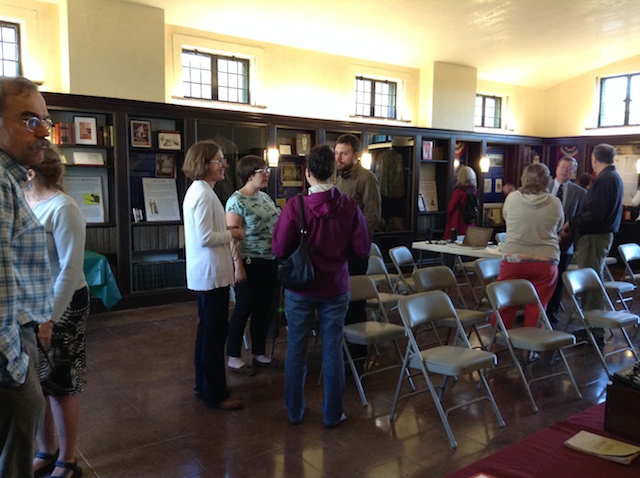
The novel's genesis was playful, springing from a ghost story challenge during the notably rainy summer of 1816 that kept Mary, Percy, and various traveling companions such as Lord Byron trapped indoors, and looking for amusement. But it grew into an exploration of what new powers were being unlocked as science threw off the chains of church and state restrictions and dared to explore every mystery. It has become a muscular and enduring metaphor for letting our curiosity outrun our sense, but at its base it is about responsiblity.
When Dr. Frankenstein beheld his living monster, he ran away, and left his helpless creature to fend for itself. Abandonment was his greatest crime... not hubris.
We all found the lecture to be lively and interesting, which provoked further discussion afterwards. We now live in the world shaped by those early discoveries, and there is nothing more profoundly changed in our civilization than the power of electricity.
Lines of Power
One of the ways we notice how much we rely on our power lines is when they go down. Bad weather can plunge us back into the literal Dark Ages, as we discover for ourselves how difficult it is to read a book by candlelight, or cook without our electric stove. The discovery and taming of electricity created a flexible form of power that made our meals, our learning, and our laundry all faster and easier. The advances it offers cannot be underestimated.
Because of this transformative quality, electricity itself took on an aura of "magic." A childhood friend of mine had an elderly aunt who covered all the outlets in her house with tape because she feared it would leak out. These kinds of misconceptions created an atmosphere where people believed electricity could do anything.
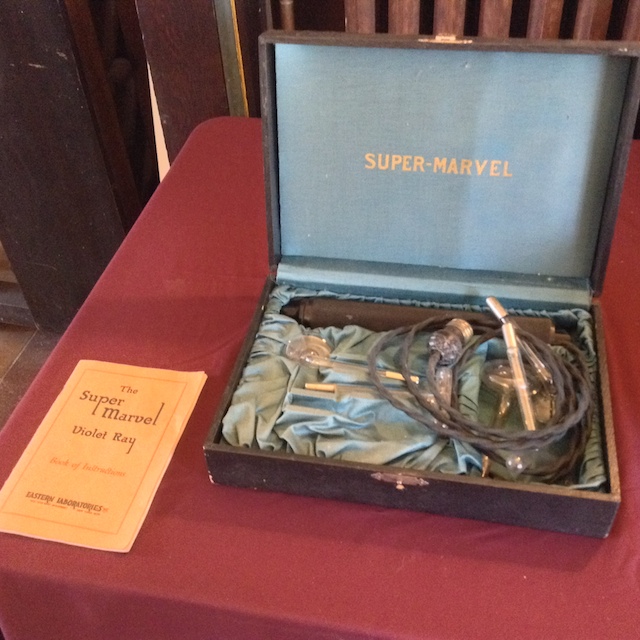
As electricity appeared in every home in the early 1900's, inventors and crackpots both leaped into the marketplace with devices they claimed would revitalize human bodies and heal human ills. Cabinets, wands, and other gadgets became available everywhere. When there were devices at the doctor's office that showed pictures of people's insides, what couldn't it do?
Saranac Lake itself is an example of how transformative medical science can be, and how quickly it can change things. As the Sanatoria Movement for the treatment of tuberculosis proved itself superior to previous methods, the town of Saranac Lake became not just a curing center, but a curing village. Curing cottages were built, homes added sunny porches, and the town's radio station went quiet during afternoon nap time. Most of the town boarded patients or worked in the sanitoriums. Doctors and scientists and celebrities flocked to the town, some to cure themselves, and some to heal others.
But one medical advance changed all that. Out of WWII came streptomycin. Within a decade, tuberculosis had been conquered, and Saranac Lake's reason for being had to shift. Though not that much. The town that once was at the cutting edge of science still has a strong interest in preserving, and advancing, this extraordinary heritage.
We are still a center for wellness. We still celebrate the healing power of the wilderness. We still offer that amazing Adirondack hospitality.
And we always will.
